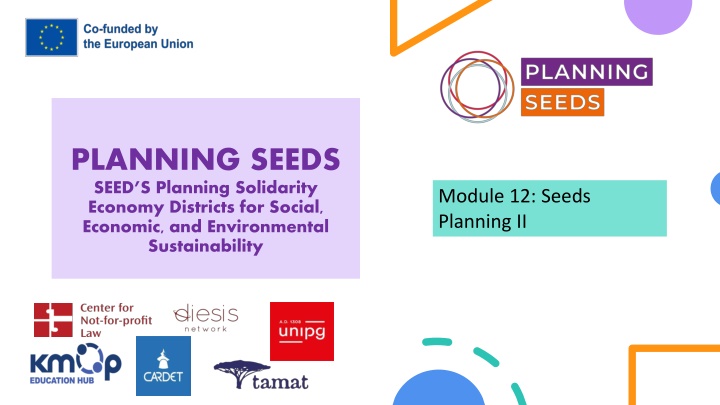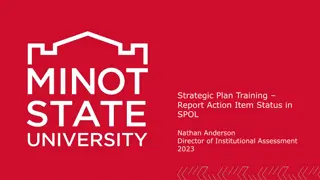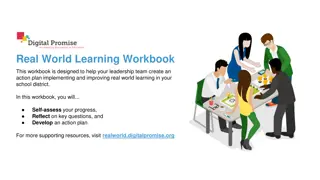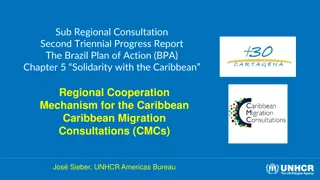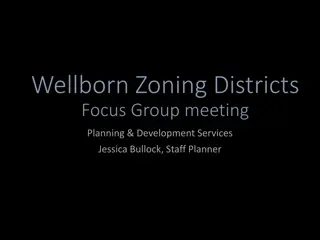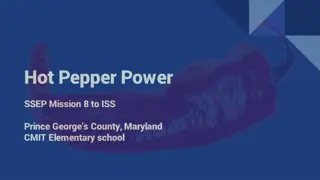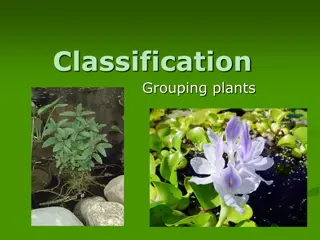SEEDs Implementation for Solidarity Economy Districts: Action Plan & Strategic Actions
T0he essential steps for developing and implementing a successful action plan for Solidarity Economy Districts. Learn how to define vision, conduct situational analysis, strategize actions, create an implementation plan, engage stakeholders, and foster continuous improvement.
Download Presentation

Please find below an Image/Link to download the presentation.
The content on the website is provided AS IS for your information and personal use only. It may not be sold, licensed, or shared on other websites without obtaining consent from the author.If you encounter any issues during the download, it is possible that the publisher has removed the file from their server.
You are allowed to download the files provided on this website for personal or commercial use, subject to the condition that they are used lawfully. All files are the property of their respective owners.
The content on the website is provided AS IS for your information and personal use only. It may not be sold, licensed, or shared on other websites without obtaining consent from the author.
E N D
Presentation Transcript
PLANNING SEEDS SEED S Planning Solidarity Economy Districts for Social, Economic, and Environmental Sustainability Module 12: Seeds Planning II
Table of content 1. SEEDs implementation: Action plan for SEEDs 2. Management tools for conducting SFSCs and SEEDs
SEEDs implementation: Action plan for SEEDs In order to ensure successful development and implementation, there are numerous essential steps involved in creating an action plan for Solidarity Economy Districts. In this Module you can find the steps to be followed for the creation of a SEEDs Action Plan. Specifically, the steps are the following: Step 1: Define the Vision and Objectives Step 2: Conduct a Situational Analysis Step 3: Develop Strategic Actions Step 4: Create an Implementation Plan Step 5: Establish Monitoring and Evaluation (M&E) Step 6: Engage and Communicate with Stakeholders Step 7: Foster Continuous Improvement
Step 1: Define the Vision and Objectives
Vision Statement: Objectives: Establish SMART (specific, measurable, achievable, relevant, and time-bound) goals that support the vision. Clearly and effectively define the Solidarity Economy District's (SED) vision. This include the district's fundamental values and long-term goals. Some examples of SMART goals include: promoting sustainable practices and lowering environmental impact; increasing local employment through cooperative enterprises; and improving social inclusion and community engagement. For instance: "To build a sustainable, inclusive, and cooperative economy that empowers local communities."
Step 2: Conduct a Situational Analysis
SWOT Analysis: Stakeholder Analysis: Identify the Strengths, Weaknesses, Opportunities, and Threats related to the development of the SED. Identify key stakeholders, including community members, local businesses, government agencies, NGOs, and potential partners. Assess their interests, influence, and potential contributions to the SED. Strengths: Existing cooperative enterprises, community support. Weaknesses: Limited funding, lack of awareness. Opportunities: Growing interest in sustainable practices, supportive policies. Threats: Economic instability, resistance to change.
Action Areas: Action Steps: Identify the critical areas where action is required to meet the goals. Provide a list of specific tasks or projects that need to be done for each action area. Examples of these areas include environmental sustainability, policy advocacy, education and training, and economic development An illustration of economic development Create a cooperative incubator to assist newly formed cooperative businesses. Offer cooperative startups choices for microfinance. Set up local markets to advertise district-produced goods.
Timeline: Create an extensive timetable outlining when each action item will be implemented. This should include milestones that are medium-, long-, and short-term. Resource Allocation: Determine the resources (material, human, and financial) needed for each stage of the action. Find out where these resources come from, including any possible funding sources, collaborations, and in-kind donations. A Timeline Example: Short-term (0 6 months): Conduct cooperative principles workshops. Medium-term: Open the cooperative incubator (6 18 months). Long-term (18 36 months): Develop regional networks and markets.
Roles and Responsibilities: For every action phase, provide individuals or organisations with specific roles and responsibilities. Make sure each action area has a sub- coordinator and a lead coordinator for the overall plan.
Step 5: Establish Monitoring and Evaluation (M&E)
Indicators: M&E Plan: Make a plan for regular tracking and assessment, including how data will be gathered, how often assessments will be conducted, and how reporting will be handled. Create indicators to track each action step's impact and progress. Example Indicators: Total number of recently formed cooperatives. Plan on conducting frequent progress evaluations and modifying the action plan as necessary according to the of the evaluation's findings. District employment rates. Participation rates of the community in SED initiatives.
Step 6: Engage and Communicate with Stakeholders
Communication Strategy: Feedback Mechanisms: Provide channels for stakeholders to offer input and take part in the decision-making process. For instance, holding frequent town hall meetings, polls, and suggestion boxes Create a plan for informing and involving stakeholders during the action plan's execution. Make use of a range of communication platforms, including social media, local media, newsletters, and community gatherings.
Review and Adaptation: Make sure the action plan is still applicable and functional by reviewing it on a regular basis. Modify the plan in response to suggestions, evolving conditions, and remaining potential.
Management tools for conducting SFSCs and SEEDs For social enterprises for economic development (SEEDs) and short food supply chains (SFSCs) to function effectively, improve conservation, and accomplish social and economic objectives, management tools are critical. An outline of these entities' essential management tools is provided below: 7. Collaboration and Communication Tools 1. Supply Chain Management Tools 8. Data Analytics and Business Intelligence Tools 2. Customer Relationship Management (CRM) Systems 9. Quality Management Tools 3. Sustainability and Impact Measurement Tools 10. Human Resource Management Tools 4. Project Management Tools 11. Ethical Sourcing and Traceability Tools 5. Financial Management and Accounting Tools 12. E-commerce and Online Marketplaces 6. Marketing and Communication Tools
1. Supply Chain Management Tools 2. Customer Relationship Management (CRM) Systems ERP Systems: Enterprise Resource Planning systems like SAP, Oracle, or Microsoft Dynamics help manage resources, streamline operations, and integrate various functions such as procurement, production, and distribution. Salesforce, HubSpot, Zoho CRM: These tools manage customer interactions, track sales, and improve customer service and retention. Inventory Management Software: Tools like Fishbowl, TradeGecko, or Odoo help manage stock levels, reduce waste, and ensure timely availability of products. Transportation Management Systems (TMS): Software like JDA, Descartes, or MercuryGate optimize logistics, route planning, and delivery scheduling.
3. Sustainability and Impact Measurement Tools 4. Project Management Tools B Impact Assessment: This tool helps measure and manage a company s social and environmental performance. Asana, Trello, Monday.com: These tools facilitate project planning, task management, and team collaboration. Gantt Charts: Tools like GanttProject or Microsoft Project help in visualizing project timelines and dependencies. GRI (Global Reporting Initiative): Provides standards for sustainability reporting. IRIS+ System: Managed by the Global Impact Investing Network (GIIN), this system offers a catalog of impact performance indicators.
5. Financial Management and Accounting Tools 6. Marketing and Communication Tools QuickBooks, Xero, Wave: These tools manage accounting, invoicing, payroll, and financial reporting. Mailchimp, Constant Contact: Email marketing tools for outreach and communication. Hootsuite, Buffer: Social media management platforms for scheduling posts and engaging with the community. Budgeting and Forecasting Tools: Software like PlanGuru or Adaptive Insights aid in financial planning and scenario analysis
7. Collaboration and Communication Tools 8. Data Analytics and Business Intelligence Tools Slack, Microsoft Teams, Zoom: Facilitate team communication and virtual meetings. Tableau, Power BI, Looker: Tools for data visualization and business analytics to support decision-making. Google Workspace, Office 365: For document sharing, collaboration, and storage. Google Analytics: For tracking and analyzing website traffic and user behavior.
9. Quality Management Tools 10. Human Resource Management Tools ISO 9001 Standards: Framework for quality management systems to ensure products and services meet customer and regulatory requirements. BambooHR, Workday, Gusto: Manage HR functions such as recruiting, onboarding, payroll, and performance evaluation. Six Sigma, Lean Management: Methodologies to improve processes, reduce waste, and enhance quality.
11. Ethical Sourcing and Traceability Tools 12. E-commerce and Online Marketplaces Shopify, WooCommerce, Magento Blockchain Technology: Ensures transparency and traceability in the supply chain. Fair Trade Certification: Ensures ethical sourcing and fair wages for producers.
